As a couple, with family or friends you like to take your time on the road and stop wherever you like: here a beach inviting you to swim, there a Greek temple, further on a Roman city, or the shelter of a Byzantine fresco, or an Ottoman mosque. And for lunch there is a delicious restaurant. L'AUTOTOUR is for you. We will provide a car at your arrival airport and return it to your departure airport. Your driving licences are valid in Turkey where the traffic regulations are the same as in France. Your stopover gites, hotels of the category that you will have indicated to us, will have been reserved by us. You just have to indicate your dates!
On the shores of the Dardanelles Strait, we will visit the five thousand-year-old site of Troy, sung by Ovid and Homer. At the end of our journey, we will walk through Istanbul and its many attractions. The present and the past, History and mythology, mountains and sea, hiking and swimming, rest and discovery, this is Byzantium!
At the time of Homer, the Aegean Sea was a vast Greek lake. This wonderful tour has been designed to understand the different historical and human aspects of the west coast of Turkey, the one bordered by the truly blue waters of the Aegean Sea. The priceless Ephesus will welcome us, still vibrant with a breath that invites to fantasy. Didymes, its oracle and its temple of Apollo with its dishevelled gorgonians, Milet, the powerful maritime city of ancient Greece, mourns its port which has now disappeared; Priene and its terraced constructions show the order of a Greek city: a certain Turkey which tells us about the beauty of Aphrodite and the fantastic tales of the Iliad and the Odyssey.
A journey from Ephesus, the ancient capital of the Eastern Roman Empire, to the shores of Lake Bafa, where the ancient and vast city of Heraklea stretched out and where, in a calm and protected environment, beautiful and moving ancient remains remain. Visit of Prayer, Didymes and Milet.
Julius Caesar came several times by sea, in a royal galley, to visit his "province" of Asia Minor, and docked at the port of Ephesus, his capital. This port is still there, at the foot of the theatre, touching the Forum, not far from the Celsius Library, facing the brothel and very close to the Marble Alley which extends into the Alley of the Courètes.
But this port is dry. The Mediterranean shore is now 7 km away from this ancient port! The alluvium which has come down from the surrounding hills and which has been churned by the river "Méandre" has caused the shoreline to move back 7 km in less than 2000 years!
It is because of this retreat of the sea at this place, in spite of the rise in the level of the oceans, that the emperor Constantine was obliged to look for another location to establish his capital in the 4th century AD and opted for the small port of Byzantium, on the Bosphorus, and made it his city, Constantino-Polis, the City of Constantine, today Istanbul. Previously, between the 50's and 110 AD, St. Paul and St. John and Mary, the mother of Jesus, were still able to dock there and live in Ephesus.
St. Paul preached there against the cult of Artemis, which he accused of being a pagan cult detrimental to the interests of his fellow Romans. Mary is said to have died there and to have been buried there. St John has his tomb there. Abandoned in the 4th century, Ephesus remained forgotten and was not destroyed: this is our chance! Its architectural wealth is there, preserved as the Romans left it when they abandoned this place which did not suit them.
more!
The Greek cities since the 6th century BC of Priene, Milet and Didymes (with the temple of Apollo), are moving to visit, reminding us of the names of illustrious scholars, architects, physicists, mathematicians, philosophers, politicians of the great era of Greek Antiquity.
The ancient city of Heraklea, built on the northern shore of Lake Bafa (today's Turkish name meaning "fish spawning") is still visible thanks to its innumerable stone remains. Christian monks, expelled from Palestine in the 7th century, came to take refuge on the inhospitable slopes of Mount Latmos and built monasteries: several frescoes from the Byzantine period are still visible in the caves of the Aurelian era.
Long before the arrival of the "peoples of the sea" (as Homer called them, not really knowing how to identify them), there lived people who also left some marks of their existence in the form of drawings on the cave walls: cave testimonies of the Paleolithic period (11,000 years before our era).
Lake Bafa is now in the heart of a protected National Park, and is a paradise for nature lovers and lovers of bird photography (cormorants, flamingos, curly pelicans, etc.). Peasants and fishermen still live in the timeless lakeside villages, far away from the tourists and the world's movements... Enjoy!
Day 1: Arrival in Istanbul
Day 2: Istanbul (Breakfast)
Day 3: Istanbul - Bursa (153 km)
Day 4: Bursa - Canakkale (274 km)
Day 5: Canakkale - Troie - Pergame (245 km)
Day 6: Bergama - Selçuk (Ephesus) - 3 hours drive
Day 7: Priene - Milet - Didymes - Lake Bafa
Day 8: Ancient Heraclee VISIT and hike on Mount Latmos ( Hiking of 4 hours)
Day 9: Bodrum - Return
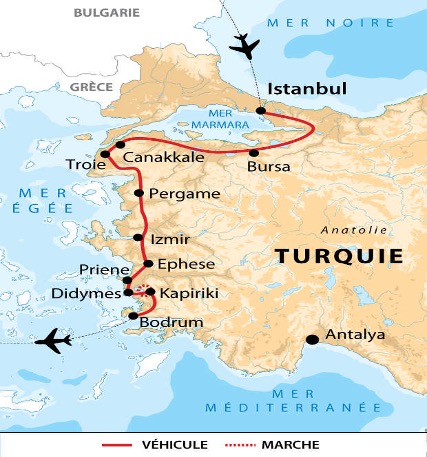 ©QuotaTrip
©QuotaTrip
Reception on arrival at Istanbul Airport. Transfer to the hotel and info meeting. http://www.hotelcentrumistanbul.com/
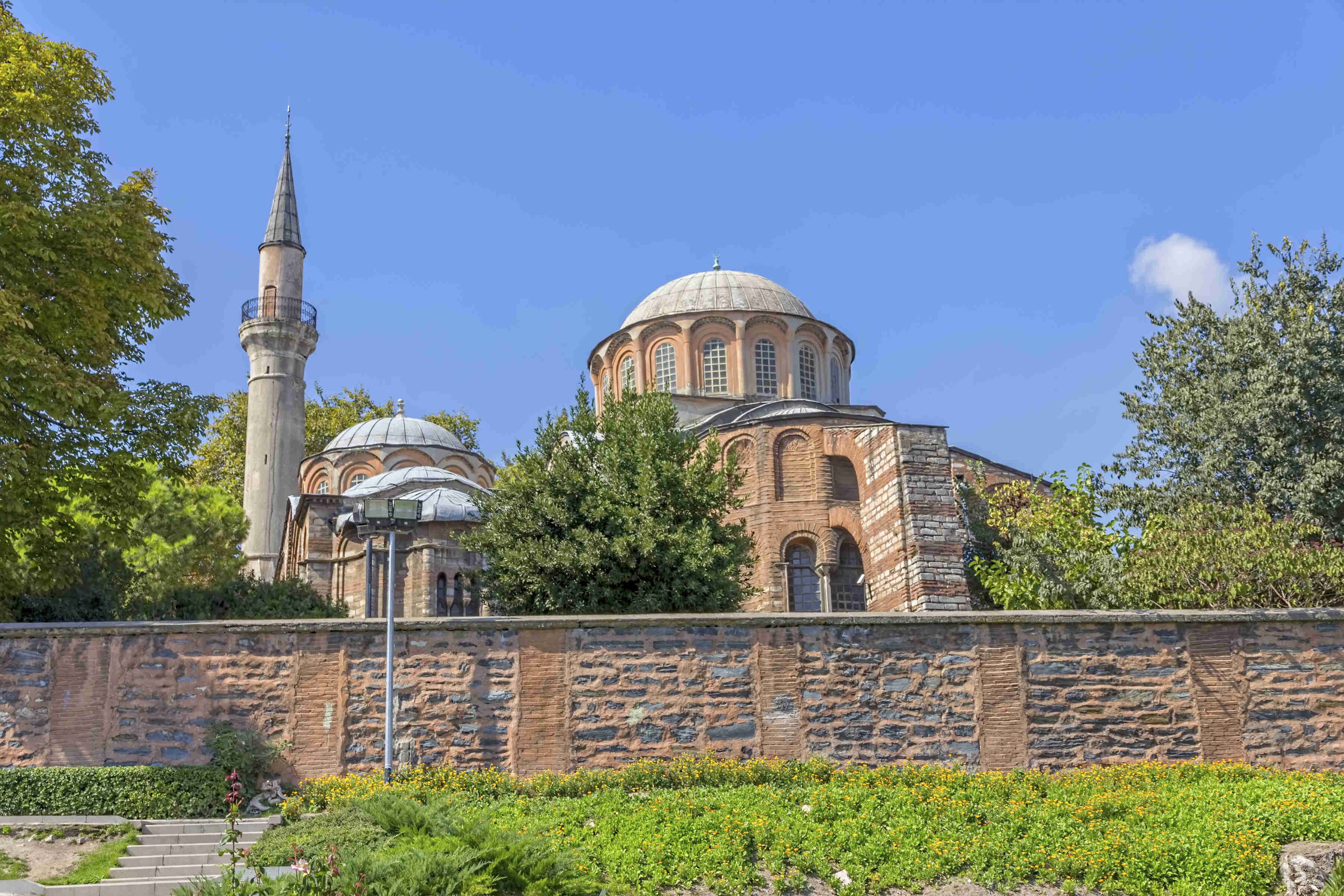 ©OPIS - iStockphoto
©OPIS - iStockphoto
We start our visit from our hotel in the historical centre on foot, as if we were on a hike through history. We make the joint visit of Byzantium, Constantinople and the contemporary İstanbul.
During the Roman Empire (from 27th to 395 AD), the most important political events in BYZANIA took place in the Hippodrome Square (built by Septimius Severus in the year 203 AD), which was dotted with victory trophies. Festivals and dramas of the Roman (until 324) and Byzantine (until 1453) eras, and even Ottoman, took place there, in the very heart of the city.
A short distance away, we will enter the Blue Mosque (or Mosque of Sultan Hamet), surrounded by its 6 minarets, built in 1615 to celebrate the victory of the armies of Islam over the Byzantines. It was a pupil of the great architect Sinan who decided on its volume, its stepped domes, its 20,000 tiles of blue faience, all in gardens of cypress, carnations and tulips.
One square to cross and we will enter SAİNTE SOPHİE.
Justinian, the successor of the Roman Emperor Constantine, decided to have a church built in the year 535, larger and more sumptuous than the Temple of Solomon in Jerusalem, and worthy of the "New Rome". İl dismembered the temples of Delphi, Athens and Ephesus (including the Artemission, one of the 7 wonders of the ancient world) and used columns, marble slabs and other precious materials to build its basilica, the emblematic monument of İstanbul, under an astonishing architectural feat (the immense dome, which remained unsurpassed for a long time). A great moment of our visit...
İstanbul being built on 7 hills, we go down due south towards the Marmara Sea. Passing through a popular and typical neighbourhood we can visit Little Saint Sophia, also founded under Justinian, the great builder of so many churches and the sinister mastermind behind the massacre of 30,000 of his subjects in the Hippodrome Square during the revolt of Nika in 532.
A well-deserved Stamboulian dinner and a good night at the hotel.
Afternoon continuation of our visit to PALAİS DE TOPKAPİ, the former residence of the Ottoman sultans. This immense estate is made up of gardens, impressive buildings built over the centuries, kiosks and pavilions, richly decorated halls, collections of treasures of all kinds (jewellery, clothes, relics, porcelain, furniture,...), fountains and statues, secular trees and flowering lawns: a huge and surprising estate situated above the entrance to the Bosphorus.
The harem will make some people dream, while others will pale in front of the jewels piled up as if they were loose in barely guarded rooms. Some will appreciate to greet some hairs of the beard of the Prophet Mohammed, or his mantle which is close to the stick that Moses used to open the Red Sea, or some bones which belonged to Saint John the Baptist. Embroidered clothes, silks and procelains from China, room of the Divan from which the Ottoman Empire was administered . A visit overflowing with curiosities and strong souvenir images...
From TOPKAPİ, walk down and along the Bosphorus towards the bridge over the Golden Horn, to reach the WALK EGYPTİEN or WALK AT EPİCES, opposite the Golden Horn. Profusion of perfumes and colours. We can then walk up to Ste Sophie and head right towards the Grand Bazaar, Ali Baba's real cave where everyone can find the gift and souvenir of their dreams.
Dinner in one of the many restaurants before the Hippodrome. http://www.hotelcentrumistanbul.com/
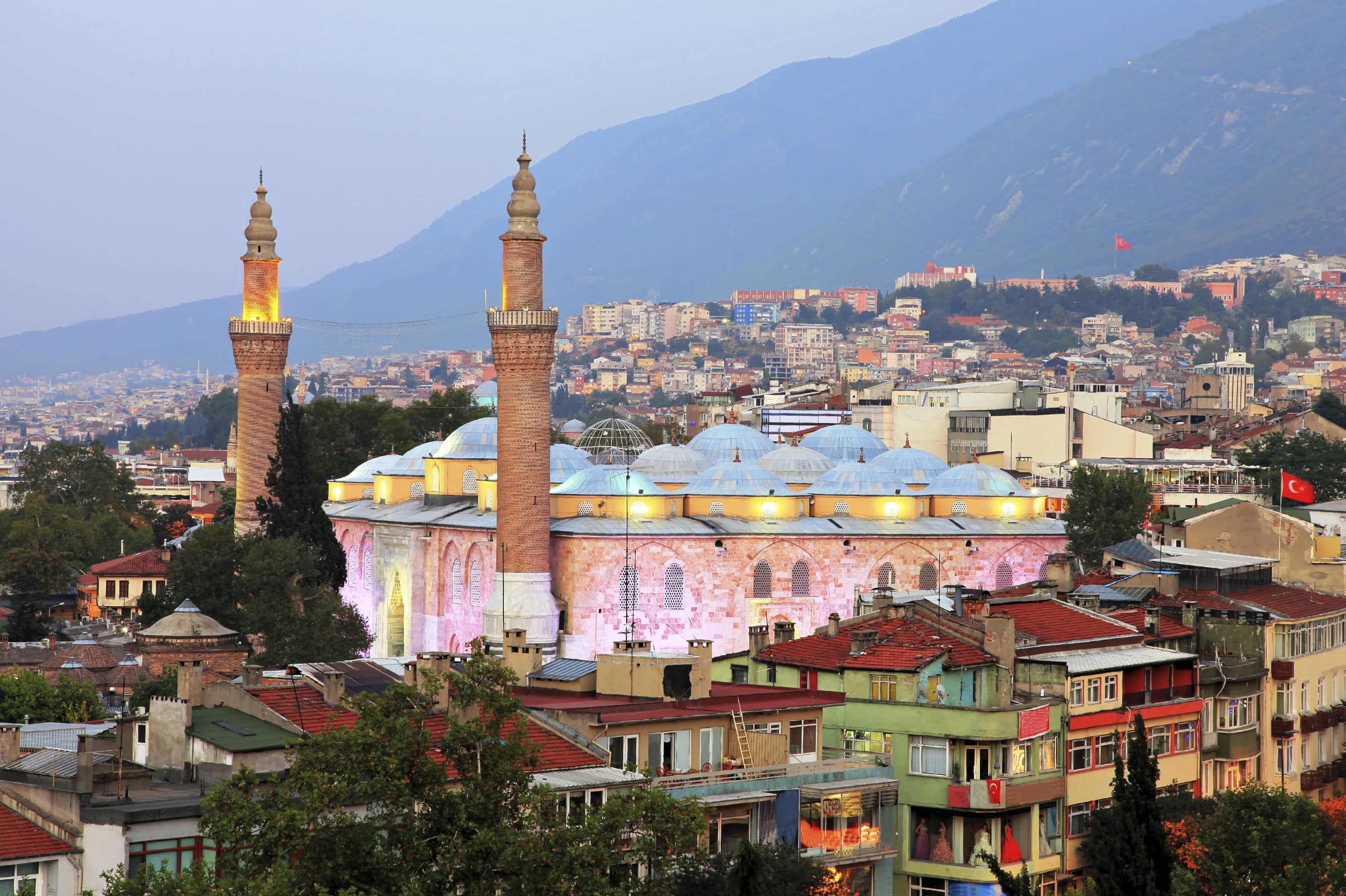 ©Muharremz - iStockphoto
©Muharremz - iStockphoto
In the morning, the rental car is available (economy class).
Crossing of the Sea of Marmara by ferry and road to Bursa, founded in the 3rd century BC by Prusias I, King of Bithynia. Conquered in 1326 by Sultan Orhan Gazi, who made it the first capital of the Ottoman Empire, Bursa was embellished with monuments that mark the emergence of a new Turkish architecture merging Persian, Seljuk and Byzantine influences, a heritage to which is added the quiet charm of the province and the opportunity to learn about the oriental art of living. Stroll through the upper town, still surrounded by its Roman and Byzantine walls, for a visit to the Muradiye religious complex which includes a mosque, a medersa and the first necropolis of the Ottoman imperial family, with its eleven princely mausoleums. Then, on the hillside, discovery of the Green Mosque and the Green Mausoleum whose earthenware is signed by the masters of Tabriz. Finally, stroll through the bazaar and its caravanserais.
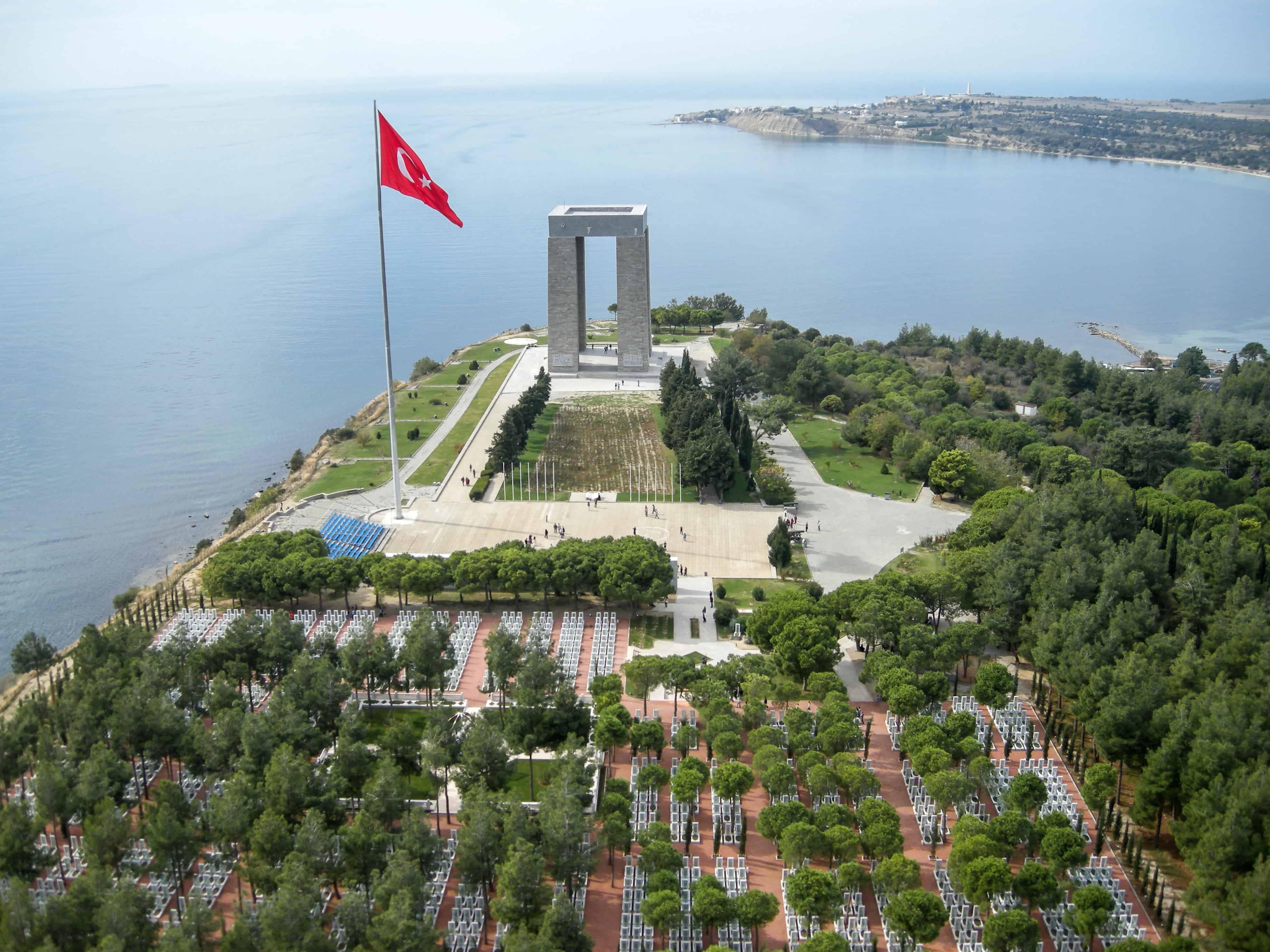 ©gece33
©gece33
Breakfast & Dinner
In the morning, once you have handed over the car, you will take the road to the Gallipoli Peninsula. Visiting Eceabat, Alçıtepe and Seddülbahir is a different and eye-opening experience all year round, but there is a specific date when many Australians or people with Australian ancestors come to the area to remember those they have lost, far from home. Every year on 24 and 25 April, people from Turkey, Australia, New Zealand, the United Kingdom and France hold Anzac Day services on the Gallipoli Peninsula for the soldiers they lost in that vicious battle. These days include a dawn service for remembrance and a tour of Gallipoli to understand where and under what conditions these soldiers fought. Ferry crossing to the town of Çanakkale. Arrival and departure by bus to our hotel is at Güzelyalı near the sea. Dinner and overnight at the hotel. http://www.irisotel.com/
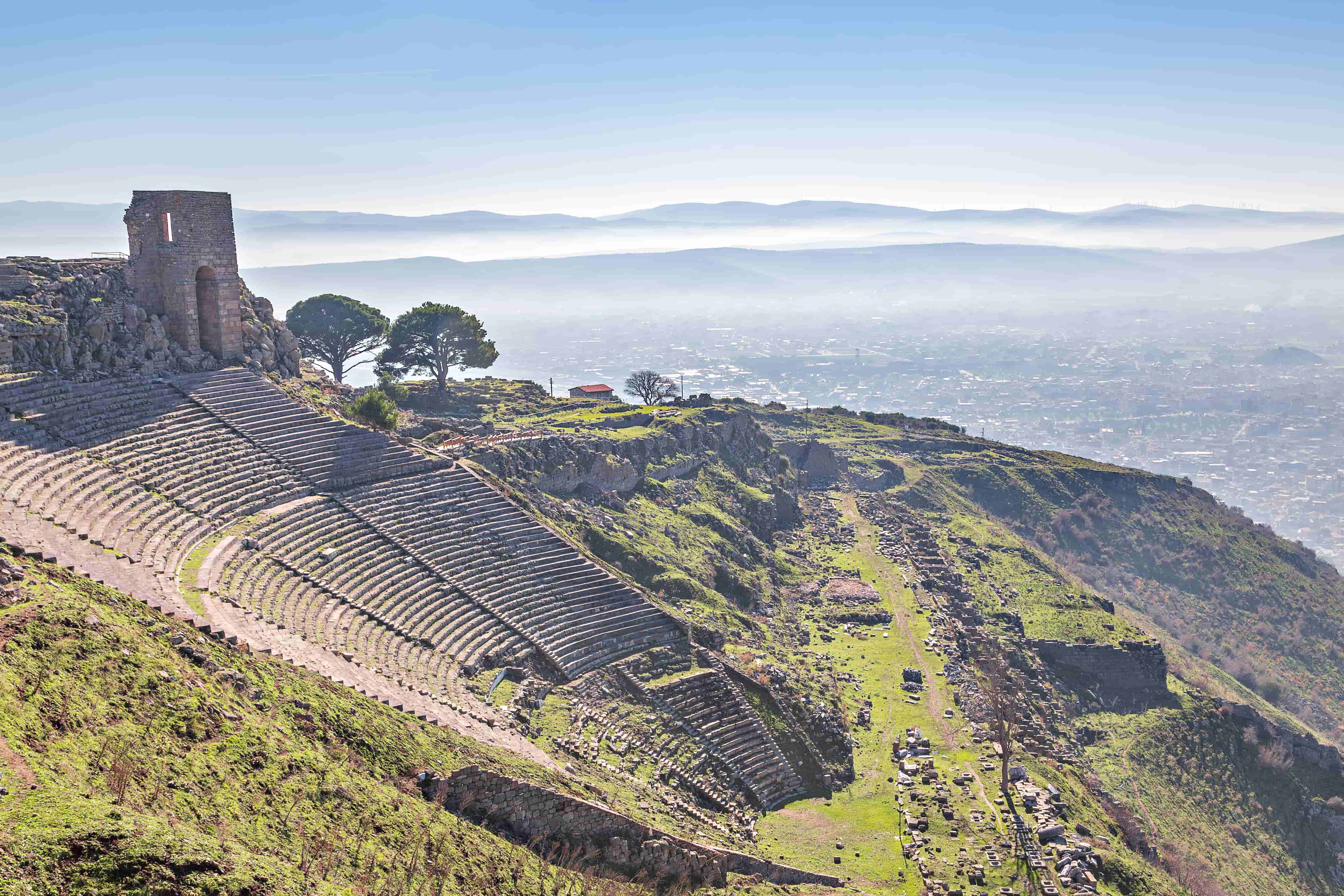 ©Ozbalci - iStockphoto.com
©Ozbalci - iStockphoto.com
Breakfast & Dinner
In the morning you can visit Troy,. Nice commented visit of this exceptional site. We will live a great moment there in the centre of this week ''TROİE AND İSTANBUL''. HOMERE, (8th c. before our era) tells in the epic of ''İLİADE the famous WAR OF TROİE (city that he called ''İLİON'') which would have taken place around 1250 before our era. Modern archaeologists, in the 20th century, have discovered at least 9 successive eras in 5,000 years of occupation of this exceptional site. During our guided tour (we will take our time) we will go back in time and discover under our feet the remains of these different eras: cobbled alleys, theatre, houses, palaces, temples... Before remembering the story of the WAR OF TROİE according to the History written by Homer, let's listen to Ovid describing the cause of this war according to Greek mythology: The 3 most beautiful Greek goddesses (Aphrodite, Athena and Hera) (that the Romans will identify with their own goddesses: Venus, Juno and Pallas) decide to compete to know which of the 3 is actually the most beautiful. The competition will be held on Mount İDA (100 km south-east of Troy), a territory belonging to the Troade whose king is PRİAM. And it is PÂRİS, the son of PRİAM, who will have to present the trophy to the divine winner. The very cunning goddess APHRODİTE makes a secret deal with PÂRİS: if he grants her the first prize, she promises him the love of the most beautiful of mortals, a certain HELENE, wife of the Athenian king MENELAS. PÂRİS is immediately convinced and succeeds, thanks to APHRODİTE to whom he solemnly presents the first beauty prize on Mount İda, in finding HELENE in Greece, kidnapping her and taking her to her father the king of TROİE where he takes refuge with his captive. Furious, MENELAS asks his ally AGAMEMNON, the Achean king of MYCENE, to help him get his wife back. AGAMEMNON sails with his troops to TROİE and begins a siege that will last 9 years. The Trojans will receive help from Sarpedon, king of LYCİENS, and from ENEE, the goddess' own son APHRODİTE, but will finally be defeated by AGAMEMNON. AGAMEMNON, knowing the love of the Trojans for horses, had a gigantic wooden horse built, hid strong armed heroes in it, including Achile, Ajax,... and offered it to his enemy Priam, who was astonished and probably tired. He had one of the city gates widened and foolishly let the enemy enter the square... Hélène, thus escaping from Paris, can then return to Greece. That was 3,250 years ago... After the visit you will take the road to Bergama. Visit of PERGAME, an astonishing and superb 3-storey city, a rival of Alexandria in Greek and Roman times. Dinner and overnight in Pergamon. 2h city walk. http://hotelhera.com
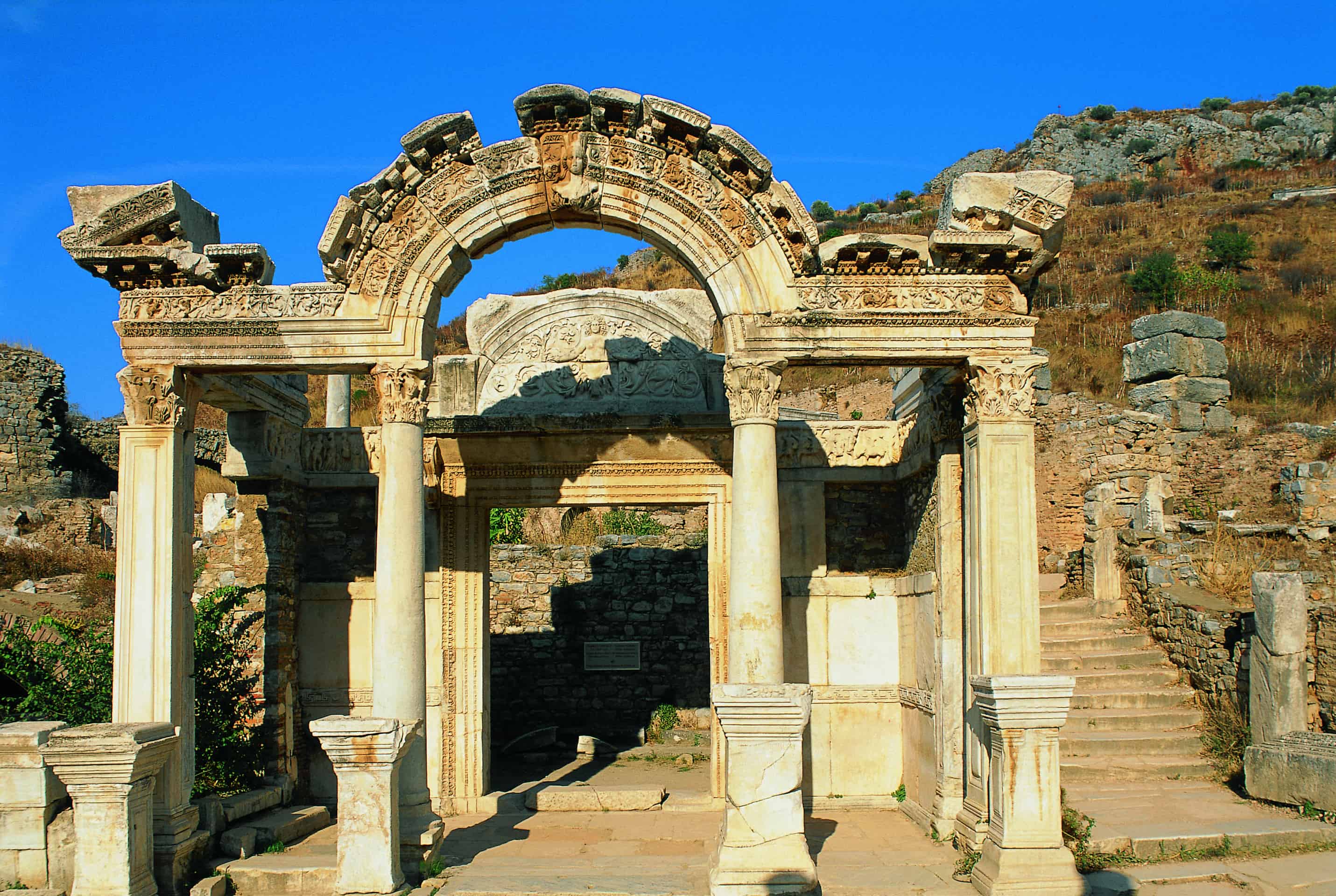 ©Alamer - Iconotec
©Alamer - Iconotec
Breakfast & Dinner
Crossing IZMIR (burnt in 1922) and arriving at EPHESE. Ephesus is the best preserved ancient Greco-Roman city (more than 2,000 years old) in the eastern Mediterranean; it is undoubtedly the best place to understand what a Roman city was like. The capital of the Roman Province of Asia had a population of about 250,000 and boasted of being the "first and largest metropolis in Asia". It was pampered and embellished by successive emperors who left monuments that we will be able to appreciate during our visit.
It is in SELCUK, on the site of the primitive EPHESE (before the silting up of the bay and the relocation of the capital closer to the sea) that stood ''L'Artémission'', the temple dedicated to Artemis, classified among the 7 wonders of the ancient world, and destroyed by Emperor Justinian in the 5th century to build with its columns the basilica of St. Sophie of İstanbul. The silting up of the port having once again condemned all trade, EPHESE was finally abandoned in the 4th century in favour of BYZANCE. Dinner and overnight in Selçuk/Ephesus. 2h30 visit (walking!) with commentary. http://www.kalehan.com/
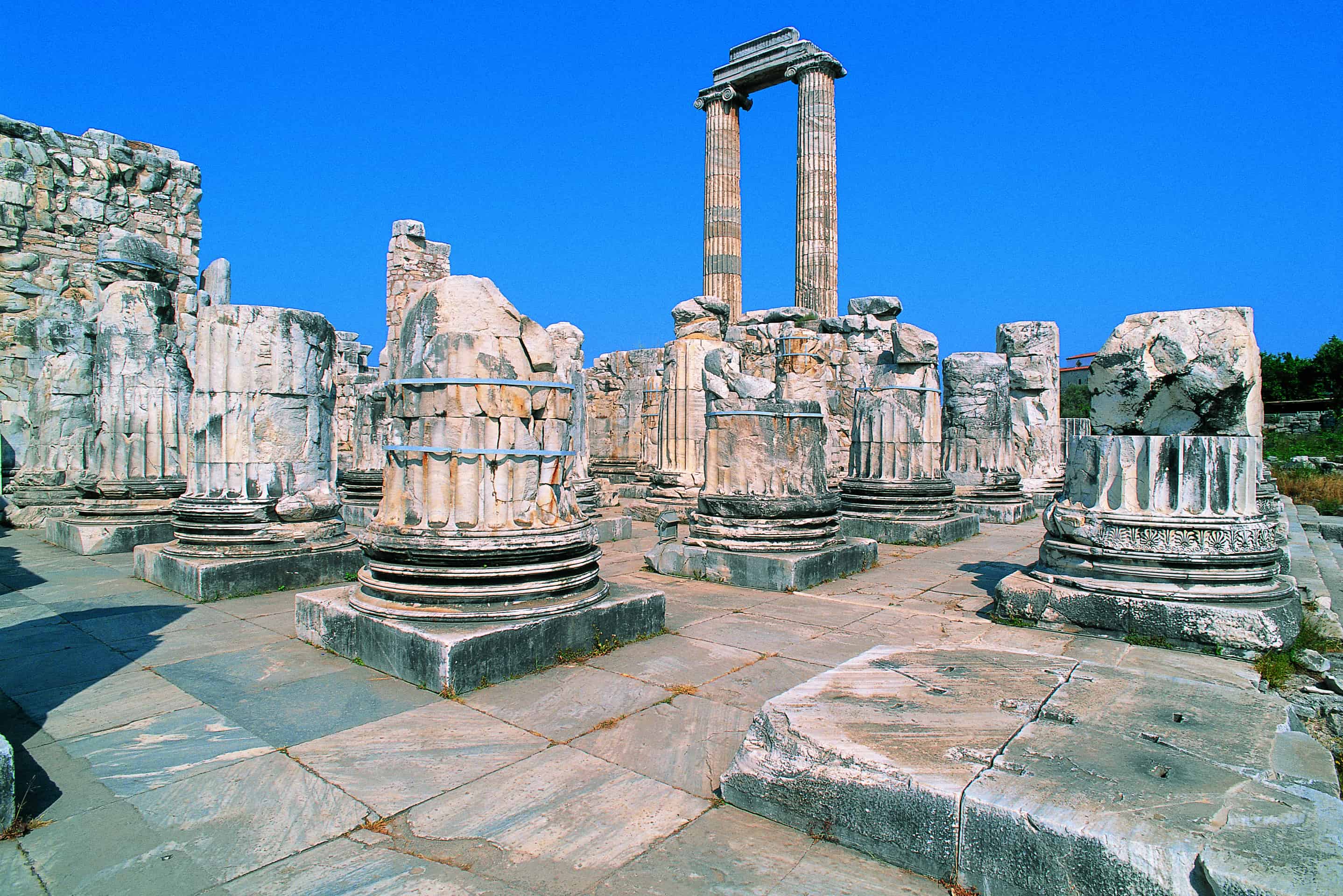 ©Hugo Canabi - Iconotec
©Hugo Canabi - Iconotec
Breakfast & Dinner
In the morning you take the road towards Priene and MIlet. Visit the Greek and Roman cities of Priene and Mile and the Temple of Apollo in DIDYMES. 1 hour's drive southwards you will reach the shore of Lake BAFA, itself formed by the silting up of the ancient bay into which the River Le Méandre flows. This lake is dominated by Mount LATMOS (1375 m) whose tormented shape has earned it the nickname "Mountain of the 5 Fingers". İl 2200 years ago (during the Roman period), the river ''Méandre'' had not yet closed this deep bay with its alluvium, which continues to fill up little by little. It was cut off from the Aegean Sea and became a magnificent lake with brackish waters, and the whole area (mountain and lake) has recently become a strictly protected Natural Park. Many species of birds, some of which are very rare, are now safe here: pelicans, flamingos, cranes, cormorants, ducks, storks and other migratory birds. Eels, mules and pikes are still fished in the lake. The surrounding nature is wild, with a grandiose chaos of ochre-coloured rocks. Men settled very early in the caves of Mount LATMOS and left traces and paintings that archaeologists date back 11,000 years ago (cave paintings that we will go and see). Then, 3,000 years ago, it was the Carians who discovered this secluded place and built their villages there. Under King MAUSOLE, they created the port of HERACLEE, which was of great commercial importance until silting cut it off from the sea and forbade ships to dock there. In the 7th century AD, a large colony of monks (300) driven out of the Sinai by the Arabs colonising Egypt and Palestine, stopped here in their flight. The site is grandiose, wild and very beautiful, and offered them a safe shelter in the caves of this tormented mountain overlooking the lake. İls built many fortified monasteries there and left many Byzantine paintings in the caves and fortified convents we will visit. Nature is at its most beautiful here in spring, but apart from the summer (which is very hot) the stay at Lake BAFA is pleasant almost all year round thanks to the mild temperature at this latitude and the proximity of the Aegean Sea. Arrival at the village of Kapıkırı. You will take possession of your rooms on the lake, in the village of KAPIKIRI, where the rural life will enchant us: numerous donkeys, cows and geese, etc. Local cuisine with olive oil and mountain herbs, fish from the lake, vegetables from the garden, raw milk from the village, honey... Dinner by the lake and a quiet night. http://selenespansion.com/
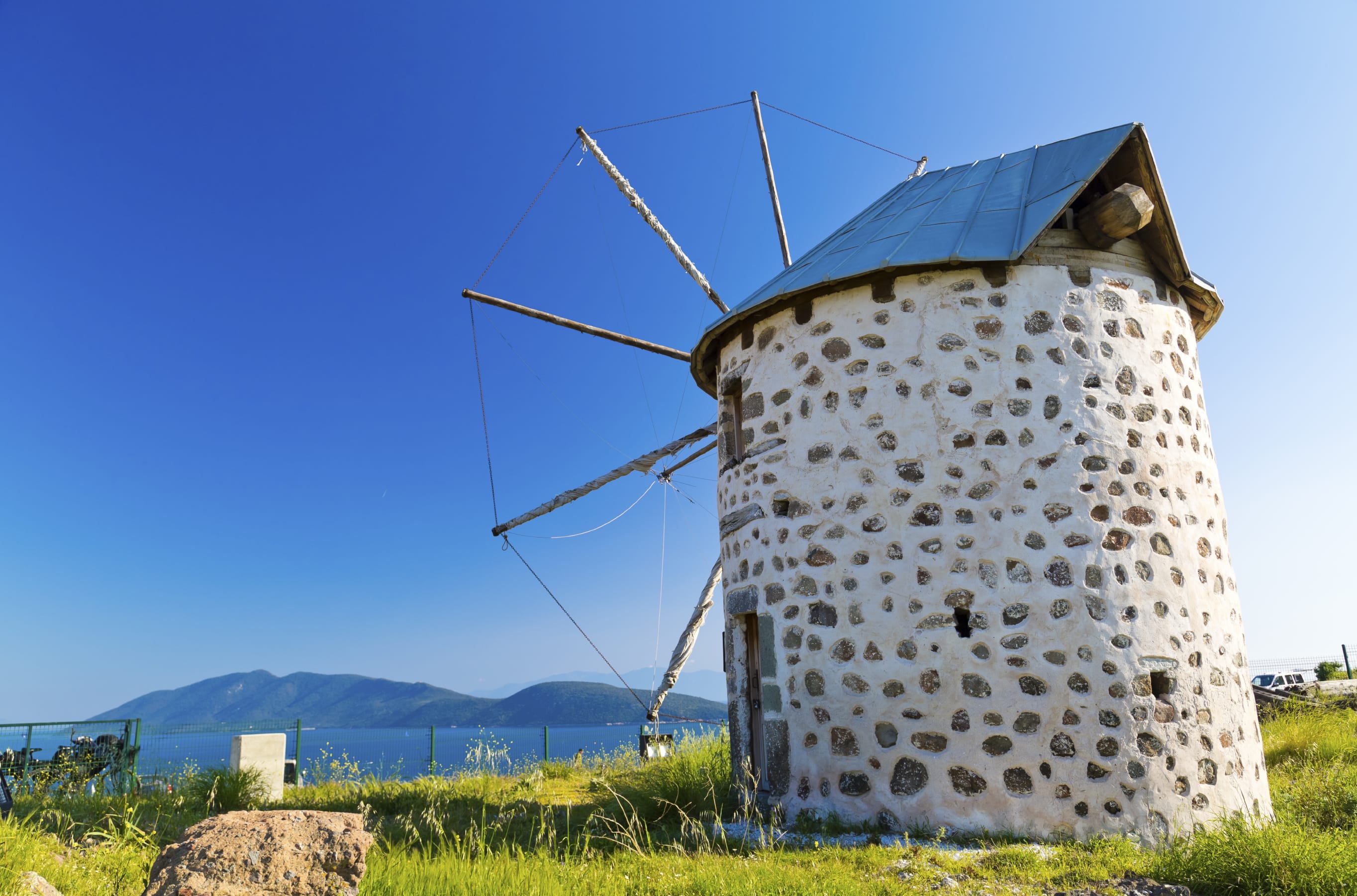 ©EnginKorkmaz - iStockphoto
©EnginKorkmaz - iStockphoto
Breakfast, Picnic & Dinner
Departure with a local guide from your hotel. The village of KAPİRİKİ has replaced the ancient HERACLEE, and there are 2,400 year old remains everywhere: the ramparts (north of the village) which are almost 7 km long and which were guarded by 65 towers or dungeons, some of which still remain.
On the AGORA of HéRACLéE was built without any further ado the present school of the village, but a plan of the ancient city helps us to understand its configuration. Going down towards the lake shore, we arrive at the TEMPLE D'ATHENA (3rd century before our era) standing on a small promontory. And on the lakeshore, numerous Carian tombs dug into the huge rocks are only a part of the immense LATMOS NECROPOLE (more than 2.500 tombs have been counted by archaeologists!). Coming up from the lakeside, we make a loop on the slopes of Mount LATMOS (2 hour hike) to admire the fantastic landscape and discover other testimonies of this eventful past... 4 hours of walking. Dinner by the lake and quiet night. http://selenespansion.com/
 ©Nejdet Duzen - Shutterstock.com
©Nejdet Duzen - Shutterstock.com
Breakfast
After a great stage, you can return your vehicle to BODRUM airport and return to your country with good memories. Breakfast
* This one week itinerary is specially designed for an in-depth discovery of Istanbul and the Aegean Coast.




Each Travel Idea is customizable according to your wishes

